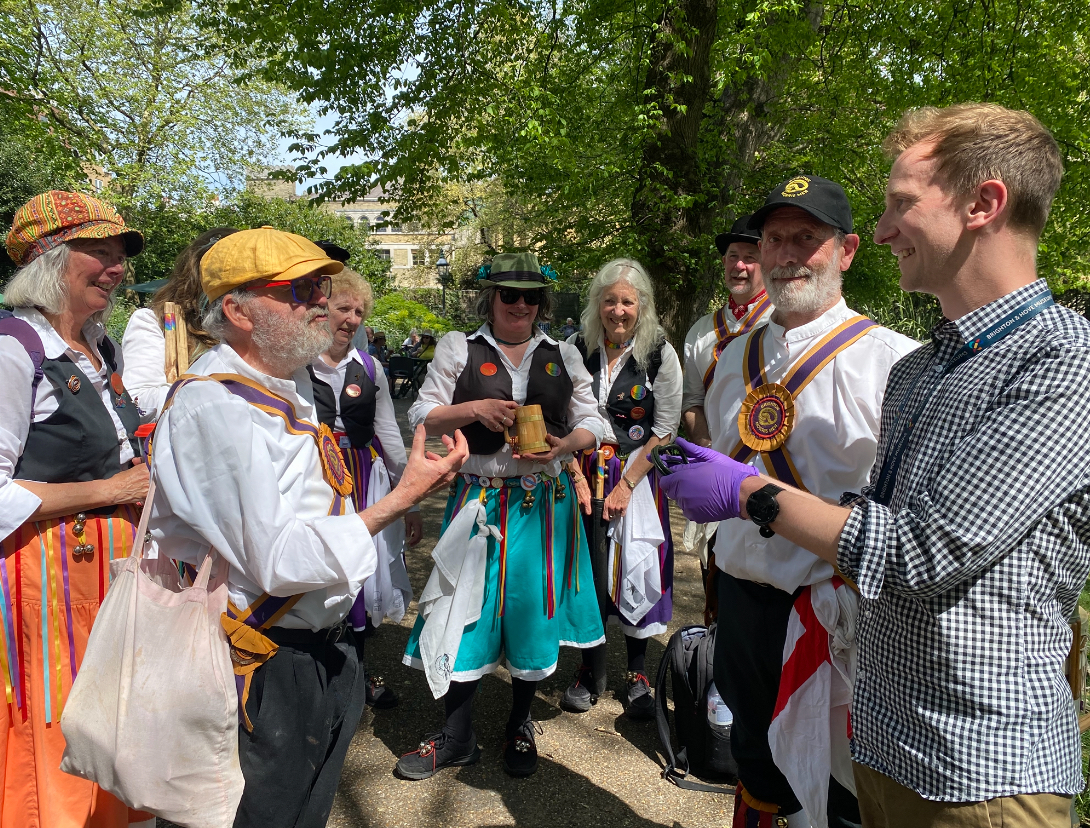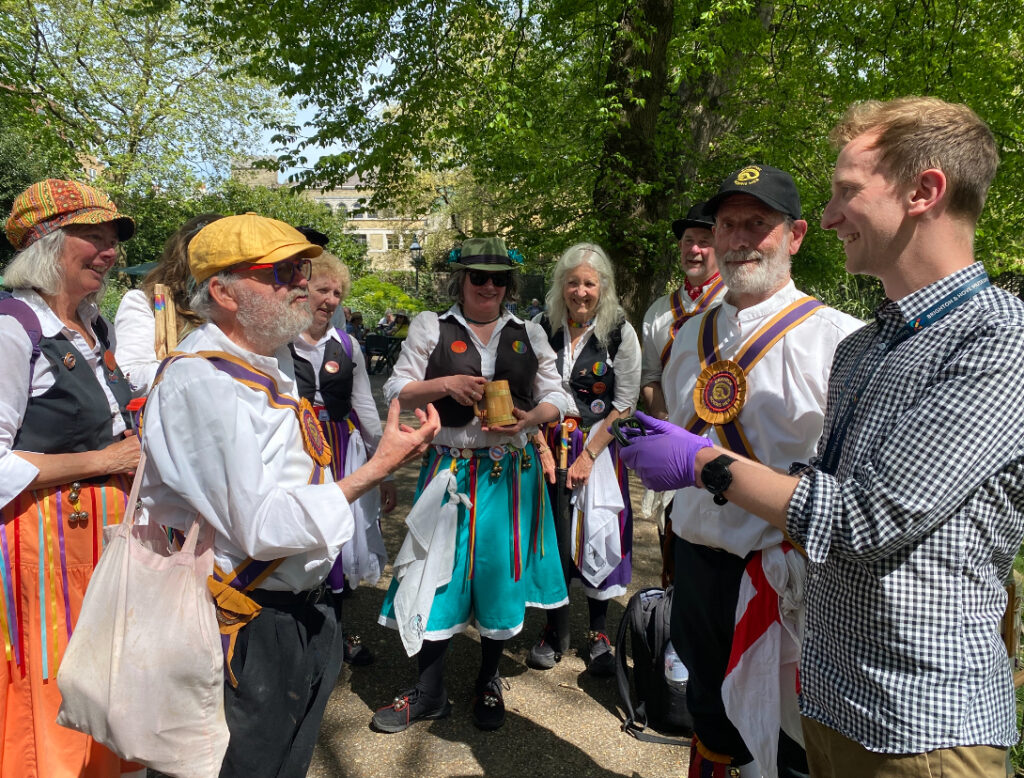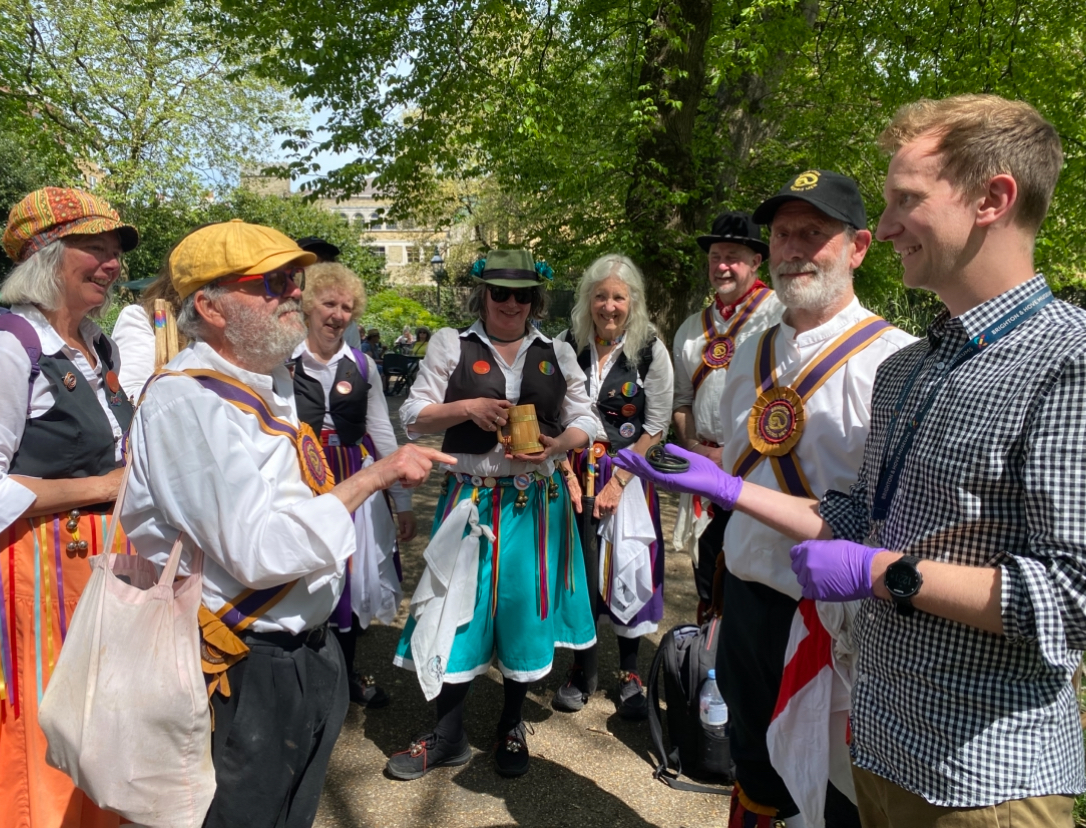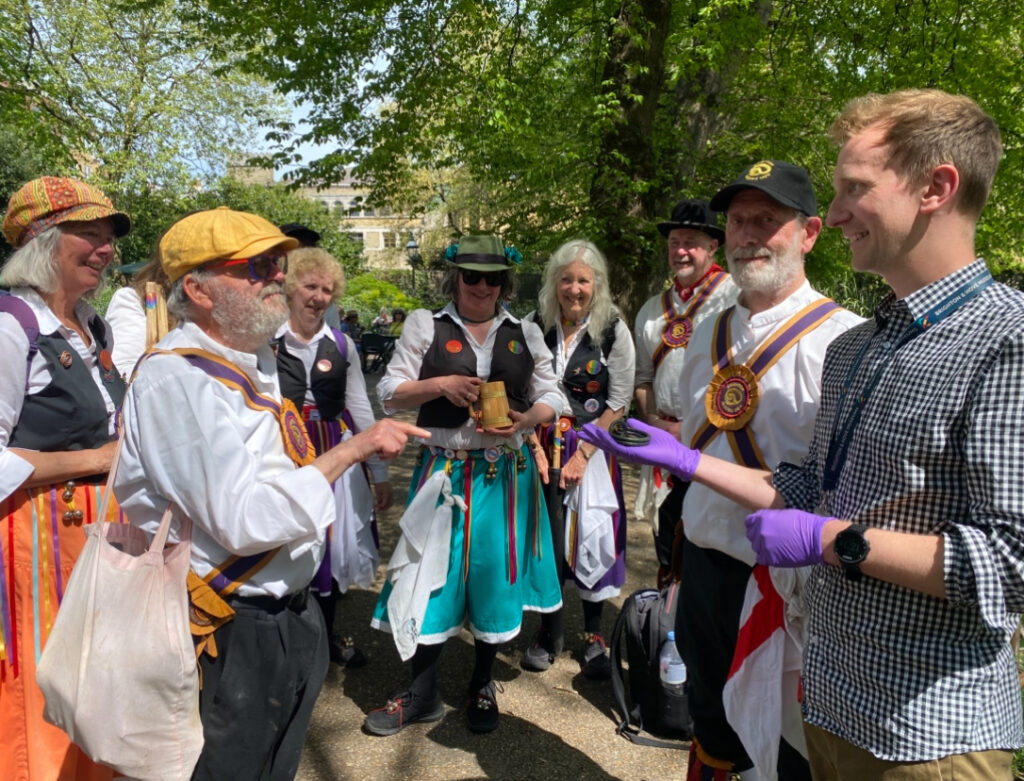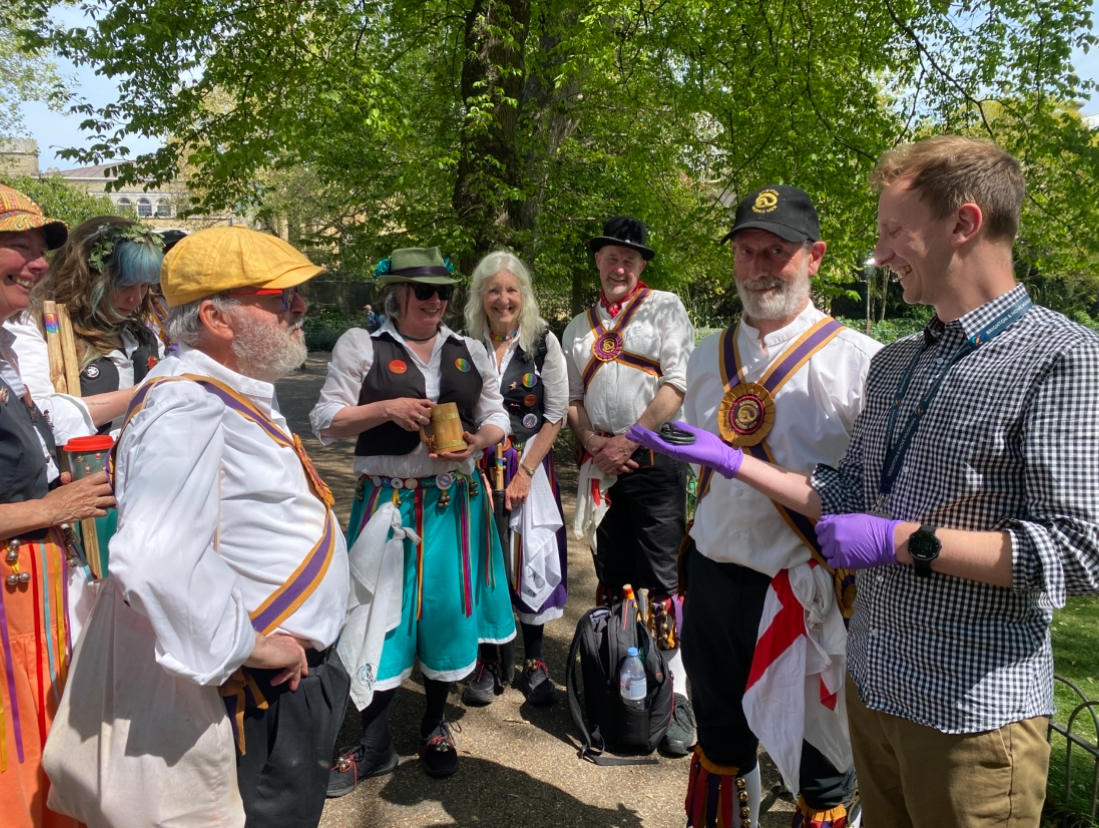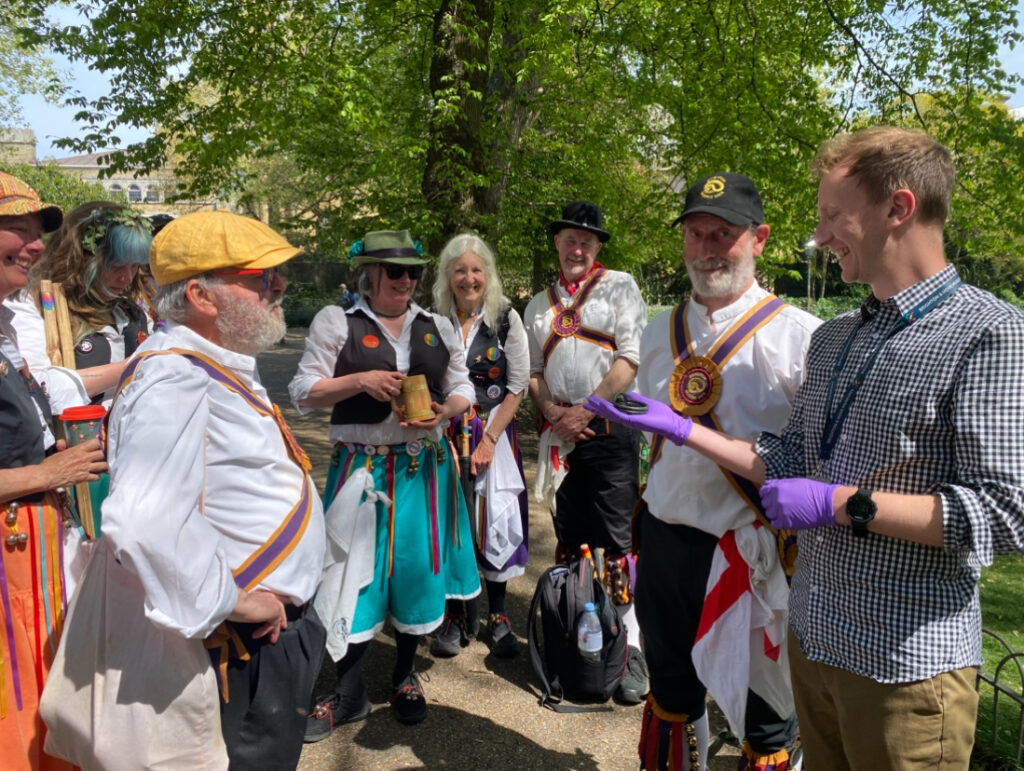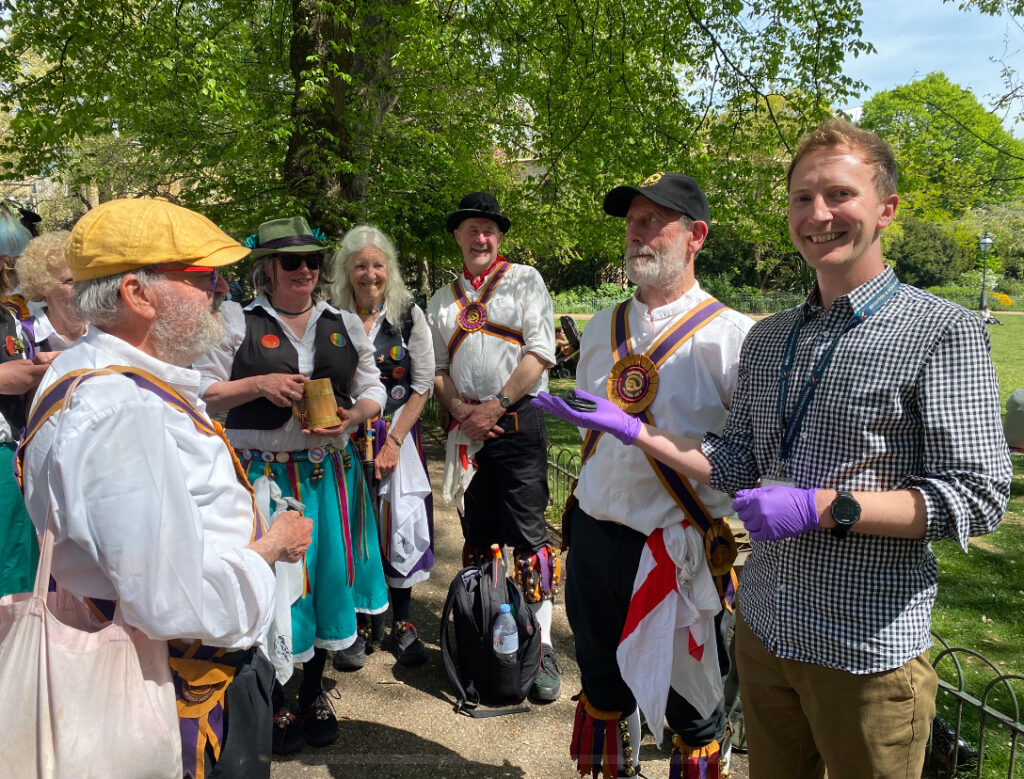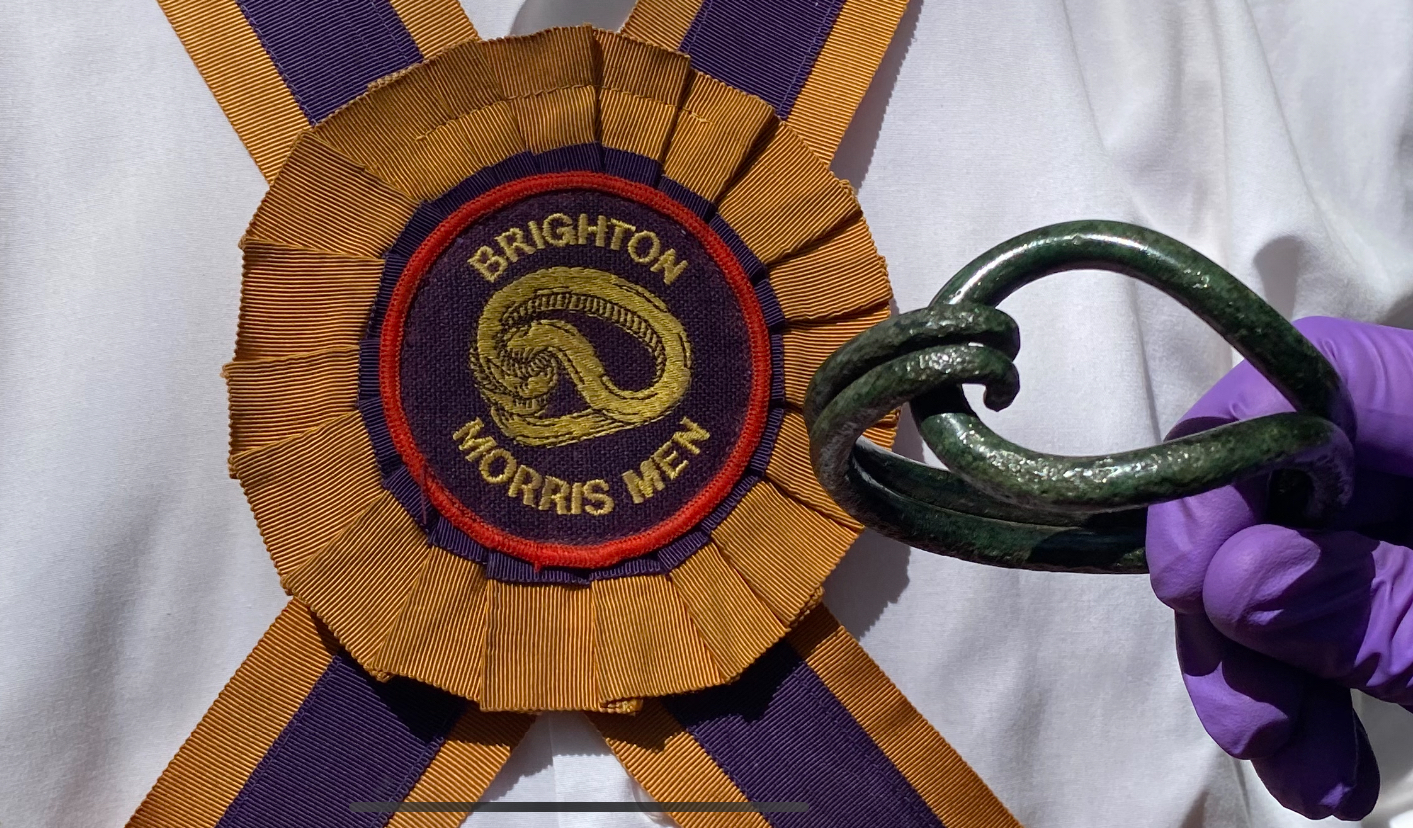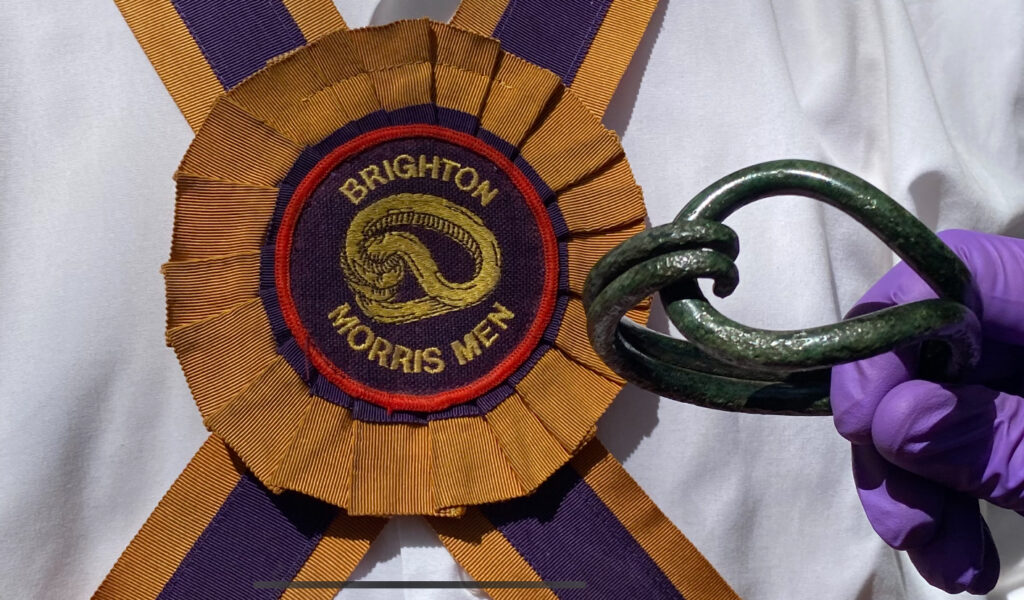Brighton Morris Reunited with Sussex Loop
A very impromptu May Day meet.
Our Local History & Archaeology Curator Dan, overheard the Brighton Morris and Cuckoo’s Nest dancing in Royal Pavilion Garden earlier as part of their annual Day of Dance May Day festivities.
So, he thought he’d head on over to show them one of our Sussex loops. Such a loop has been the emblem of Brighton Morris Men since the early 1980s. The group were very happy to take a break from their May Day activities to see Dan and the loop.
Scroll down to read more information on the Sussex loop, part of the Middle Bronze Age Black Rock Hoard discovered at Black Rock, Brighton in the winter of 1913-1914.
You can see Dan and the group with the loop below.
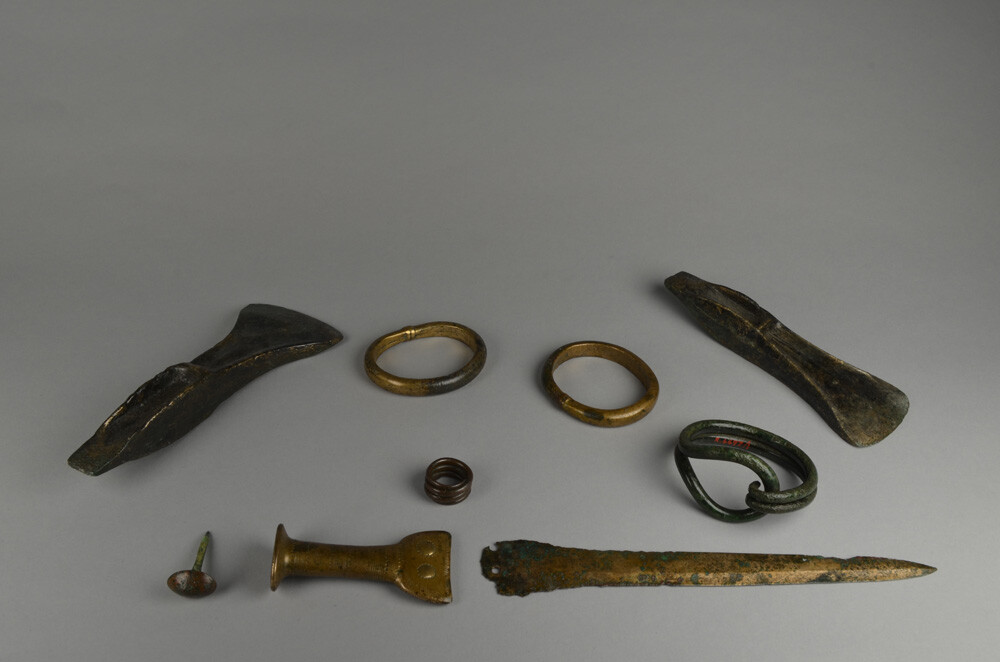
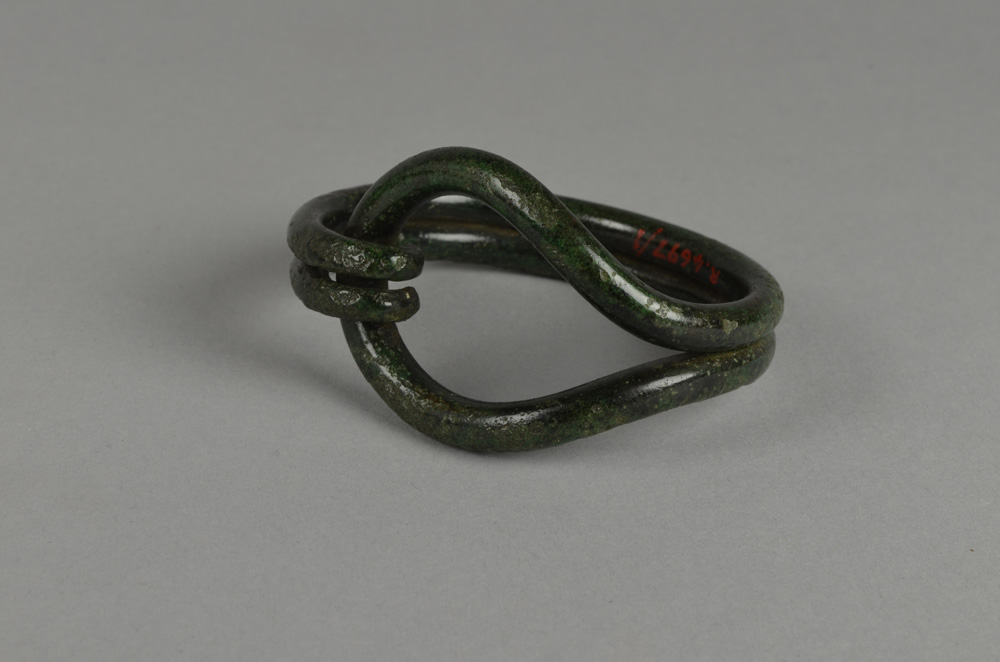
Sussex loops
Within the archaeology collection at Brighton & Hove Museums are four unusual bronze objects known as Sussex loops. They are aesthetically quite beautiful but intriguing as to what exactly they are. Does their form and context of discovery reveal any clues as to their purpose?
Sussex Loop found at Falmer Hill
The loops at Brighton are part of the known Sussex loop assemblage, being 34 in total. The term ‘Sussex loop’ derives from their shape and area of discovery. Until mid-2013, of the 32 Sussex loops found, from the first four uncovered at Hollingbury Camp hill-fort in 1825, to the five found in the Near Lewes hoard in 2011, all had been discovered within the Sussex South Downs and Weald area. And nearly all within 15-20 miles of the city of Brighton. However, in May 2013 two loops were discovered outside the modern Sussex border, as part of a Middle Bronze Age hoard in Ockham, Surrey.
The loops are made from a single, thick rod of bronze, doubled over forming a loop at one end and then bent round into a circular form, with the ends of the rod curled and hooked back over into the loop. They are considered to date to the Middle Bronze Age, around 3500 to 3000 years ago; a period shaped by significant cultural and social change. They are generally found in pairs or threes and in nearly all cases as part of a Bronze Age hoard. These hoards often include other items such as bronze jewellery, tools and weaponry. Overall, the loops share distinct similarities in form; however no two Sussex loops are identical.
Of the four Sussex loops in the collections at Brighton, one was discovered at Falmer Hill in 1918 and three were discovered as part of a Middle to Late Bronze Age hoard at Black Rock in 1913. The discovery at Falmer Hill was not a singular find but was rather one of four loops found along with a flint dagger. Around thirty years after they were found, one loop and the dagger were donated to the museum but the exact location of the three other loops was unknown, other than many years previously they had been given to children for a school museum. The Black Rock hoard was bequeathed to Brighton Museum in 1931. As well as the three loops the hoard included eight bronze palstave axes, a bronze rapier blade, a bronze dirk handle, two plain bronze armlets and a decorated bronze spiral finger ring.
Mystery of the Loops
So, who created these loops? For whom were they made and why were they hoarded? Were they the product of an individual or rather the work of several Bronze Age craftsmen?
Consensus is that Sussex loops are a form of adornment. Historically it was suggested they were arm-rings, but more recent research suggests they are more likely a bracelet. Is their unique form an individual expression of cultural status? Or the social symbol of a particular family group?
Were they the hoard of an individual seeking to hide their wealth from general knowledge? Or the hoard of a merchant keeping them safe until the next opportunity to trade? Or was their deposition some kind of ritual or votive offering by an individual or community?
Interpretation can only be drawn from current evidence available, however limited this may be. But it should not be forgotten that it can all change again with the next find of a Sussex loop and the new evidence this may bring to light.
